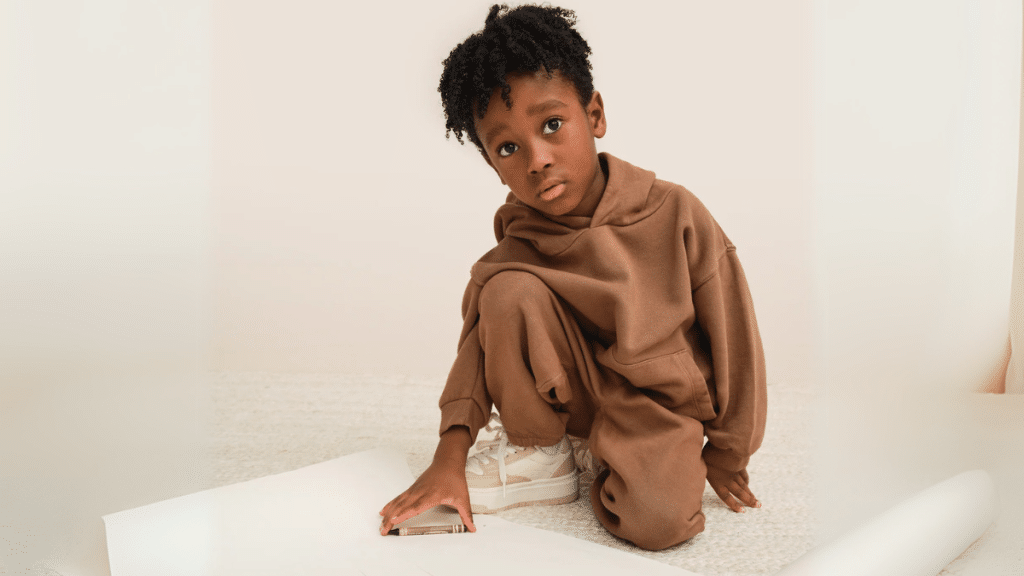Minimalist baby clothing has gained popularity among families seeking sustainable and practical solutions. These garments focus on simplicity, durability, and eco-conscious production, making them an appealing choice for parents. Let’s cover the reasons why this style of clothing is becoming a go-to option for modern families.
Eco-Friendly Materials Reduce Environmental Impact
Minimalist baby clothing, such as options from brands like Quincy Mae, often features eco-friendly materials that reduce environmental impact. These garments are typically made from organic cotton, bamboo, or other natural fibers that require fewer resources. Natural materials are biodegradable, meaning they break down without contributing to landfill waste.
Additionally, the production processes for these fabrics often use less water and energy, further minimizing their ecological footprint. By choosing clothing crafted from sustainable materials, parents contribute to protecting the environment for future generations. Supporting ethical production methods also helps promote a fair and responsible approach to clothing manufacturing.
Durable Designs for Longer Use
One of the standout benefits of minimalist baby clothing is its durability. These garments are designed to last, using high-quality fabrics and stitching to ensure they withstand regular wear and washing. Durable clothing can be passed down to younger siblings or shared with other families, thus reducing the need to purchase new items frequently.
This longevity aligns with sustainable living principles by lowering consumption and waste. For parents, investing in well-made clothing provides peace of mind, knowing that their child’s wardrobe will remain functional and comfortable over time. Furthermore, durable designs reduce the hassle of replacing worn-out items, which saves time and resources.
Simplified Wardrobes Promote Practicality
Minimalist baby clothing encourages the creation of simplified wardrobes, focusing on versatile pieces that can be easily mixed and matched. Neutral colors and timeless designs are common, making it easy to dress little ones without overloading their closets. By prioritizing fewer practical items, families save time, money, and storage space.
This approach also reduces the risk of buying unnecessary items that may go unused. Parents can focus on purchasing what their child truly needs, fostering intentional and thoughtful consumption. Moreover, simplified wardrobes make planning and organizing outfits easier, reducing daily stress.
Healthier Choices for Sensitive Skin
Babies have delicate skin that can be irritated by synthetic fabrics or harsh chemicals used in conventional clothing production. Minimalist baby garments are often made with natural, chemical-free materials, ensuring they are safe and gentle on sensitive skin. Organic fabrics are free from harmful dyes and treatments, providing a healthier alternative for little ones. For parents prioritizing their child’s well-being, choosing clothing made with care offers an added layer of assurance. This focus on safety and comfort further enhances the appeal of minimalist baby clothing.
Are Minimalist Baby Clothes a Practical Choice for Families?
Minimalist baby clothing is a practical choice for families looking to simplify their lives while prioritizing sustainability. These garments offer durability, versatility, and eco-conscious production, making them an ideal option for those who value quality over quantity. While the upfront cost may sometimes be higher than conventional clothing, the long-term benefits of reduced consumption and durability often offset the initial investment. Besides, minimalist styles ensure that each piece serves a purpose, eliminating clutter and promoting a more organized lifestyle.
Minimalist baby clothing, like styles from brands such as Quincy Mae, combines sustainability, durability, and practicality to meet the needs of modern families. Parents can make a meaningful impact on their children’s comfort and the environment by choosing eco-friendly materials, investing in durable designs, and embracing simplified wardrobes. These thoughtful choices create a healthier, more sustainable future for families and the planet.
